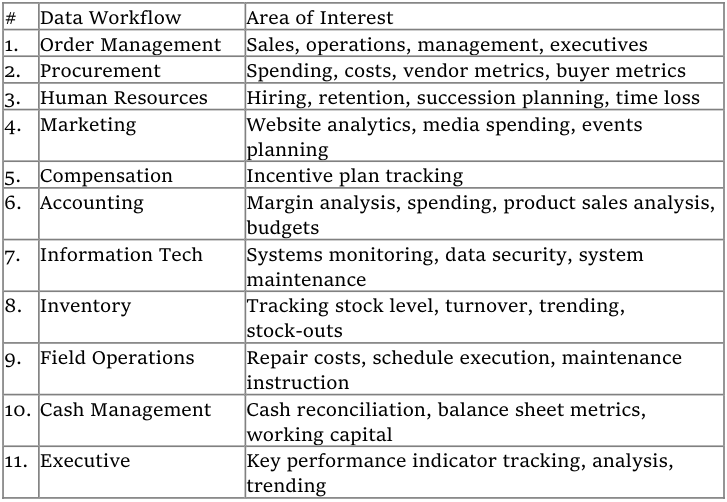It’s impossible to graft a fixed number of data workflows onto every business, non-profit or government entity that is definitive. However, standard data workflows provide generalization and repeatable starting points.
Typical Milestone Durations
Guidelines for work durations, assuming you have a team dedicated to the project:

Many SaaS vendors permit free or discounted pricing during a POC sprint. Most of the cost early in the project will be for project planning, consulting services, project planning and training.
Suppose you have a few technically capable people with experience deploying analytical business information systems. In that case, progress may be slower in the early stages because you may opt for less consulting help to reduce early expenses. If speed to finish is essential, retain an expert consulting partner to deliver excellent work faster.
These “rules of thumb” are based on practical experience with focused effort and senior management buy-in. There are no guarantees. Do you have sloppy workflows that generate unreliable data? Lack of leader sponsorship and buy-in? Your durations may extend beyond my estimates.
Undeniably cloud APIs and modern SaaS software have reduced the time required to go from nothing to a set of interactive dashboards built on a robust, best-of-breed data platform.
Typical Year One Data Workflows
Well-run projects develop data workflows that support the most critical business processes in the first year of a BI deployment. Examples of workflows may include:

All these are high-value targets of opportunity, but you may identify more that are particular to your business.
The priority for each workflow should consider the availability and condition of current data sources, the potential value to your company and the availability of your employees with detailed knowledge of the workflows. Before establishing a cadence for the development sprints, you must assess each workflow’s challenges.
In the next post, we will review what a system-wide data workflow should look like.

